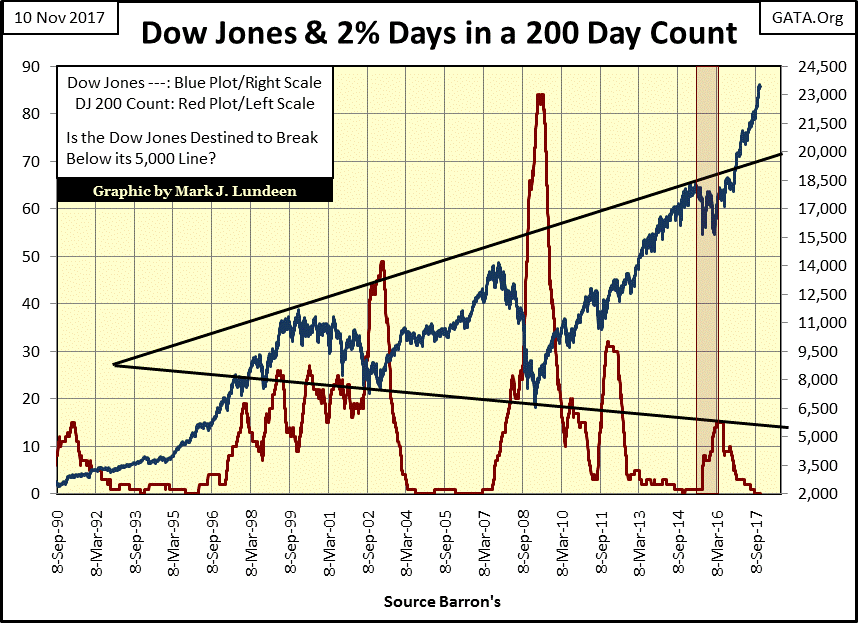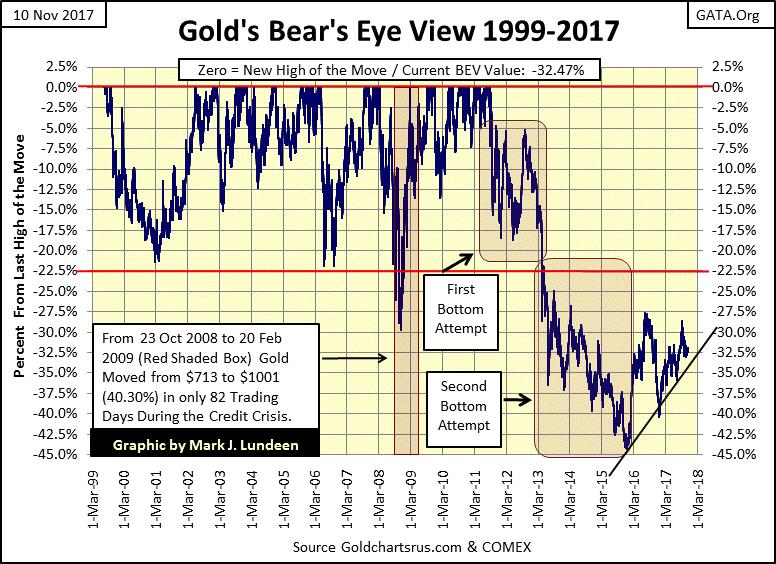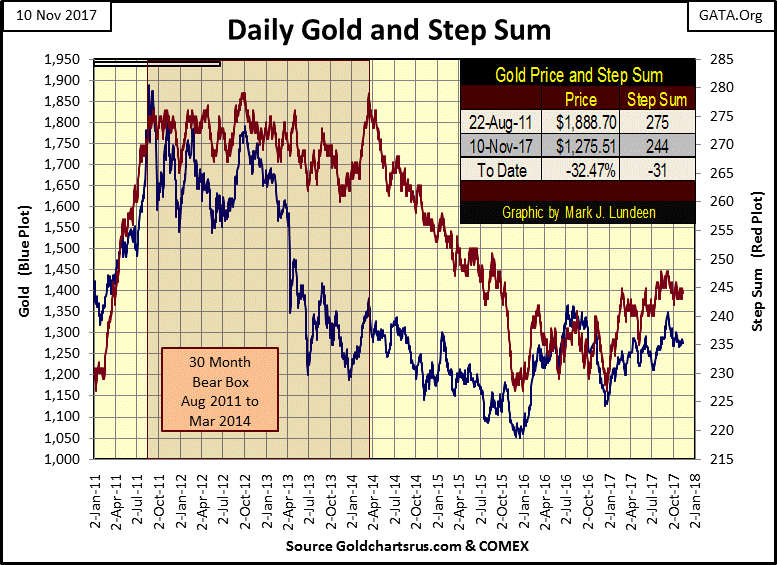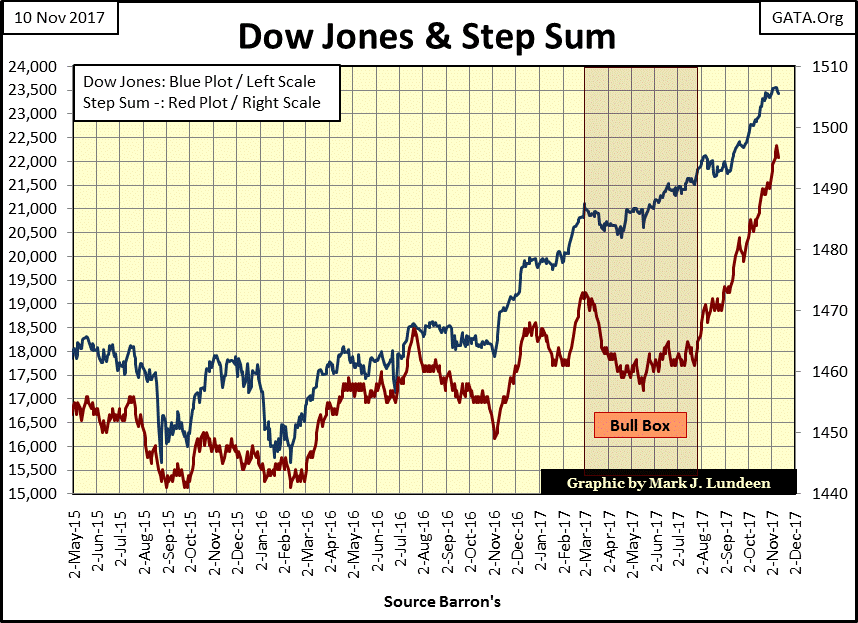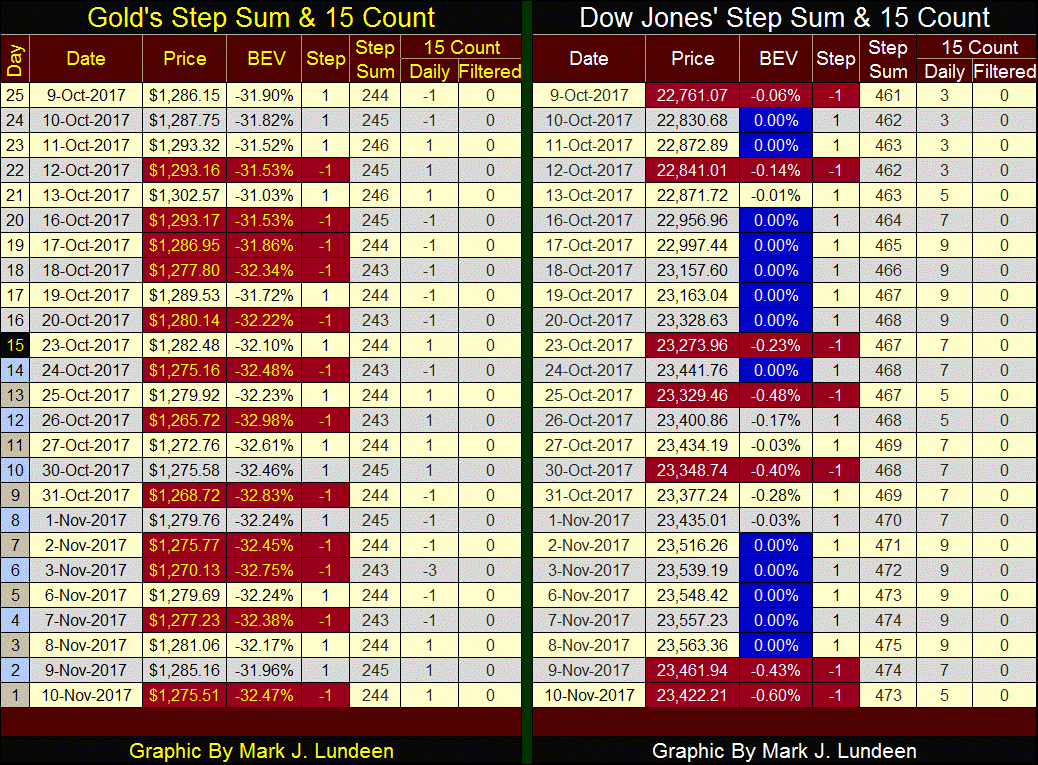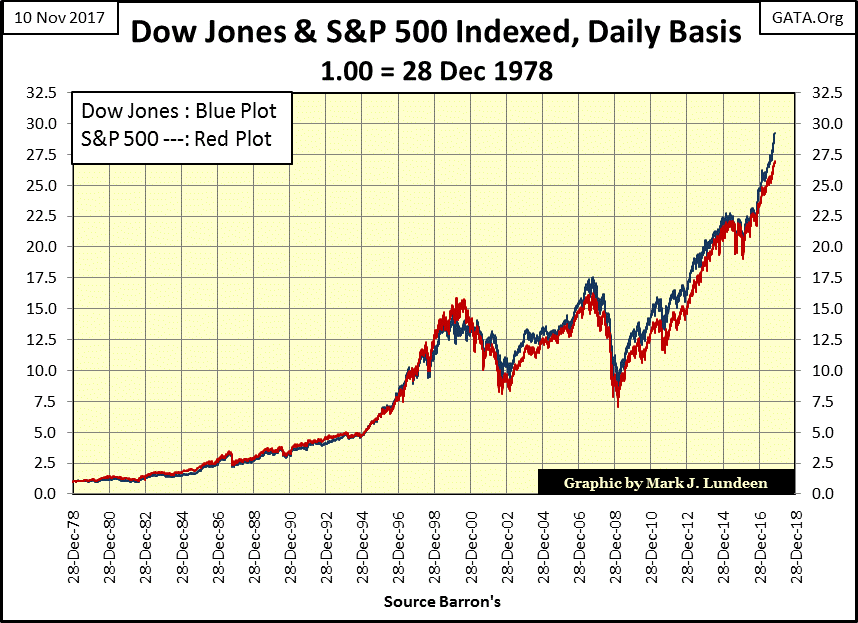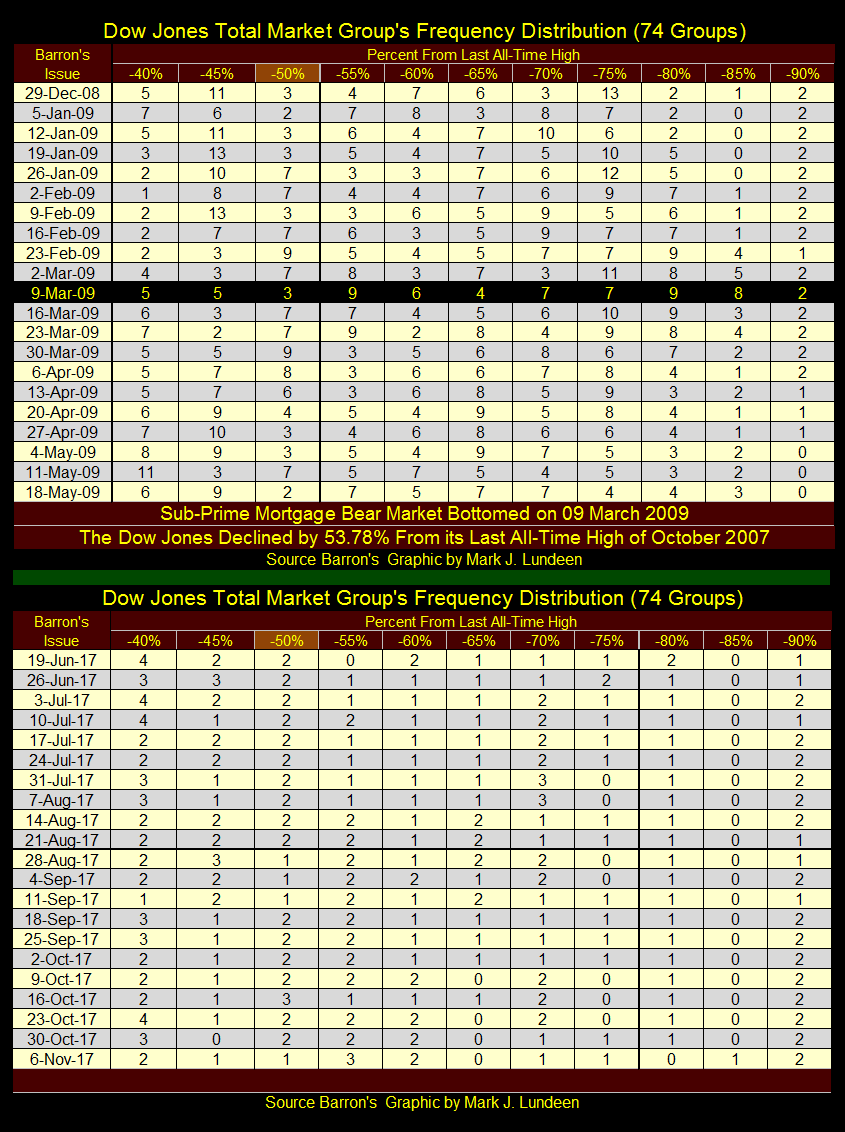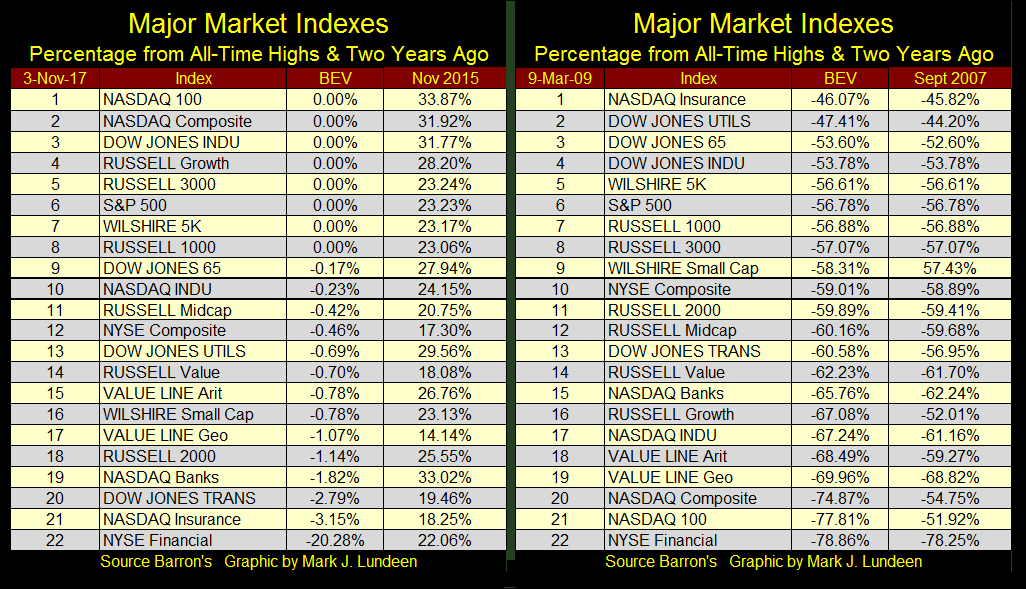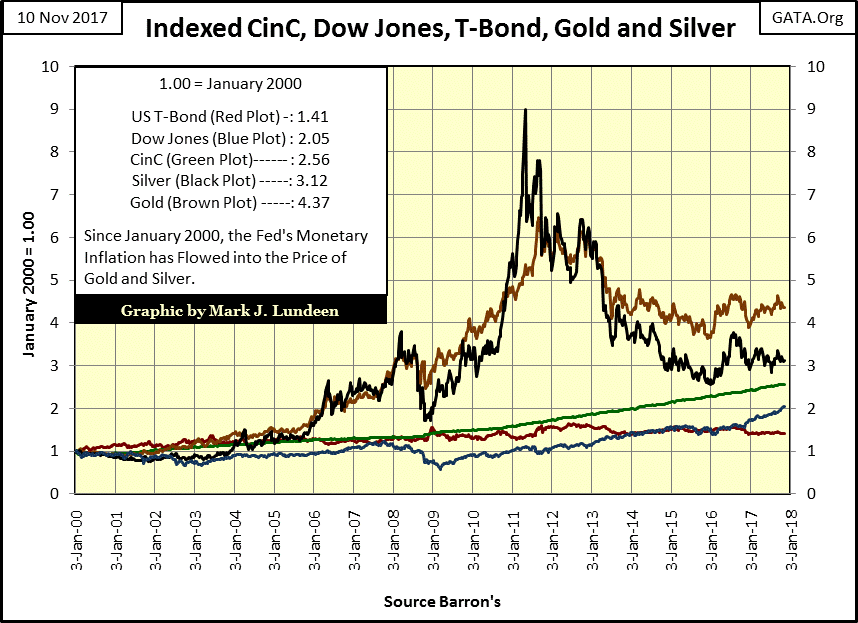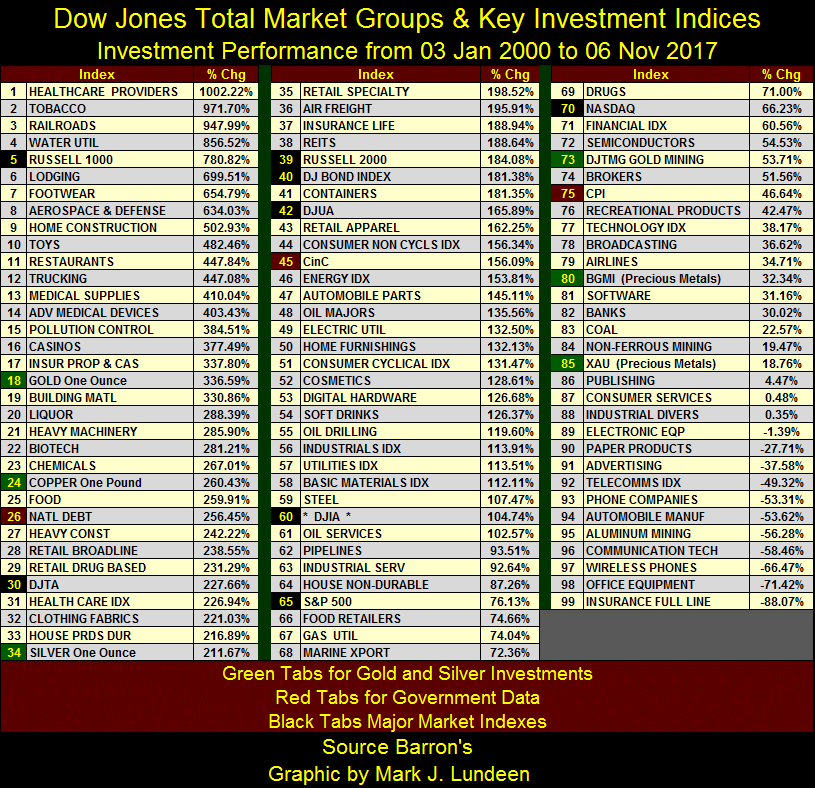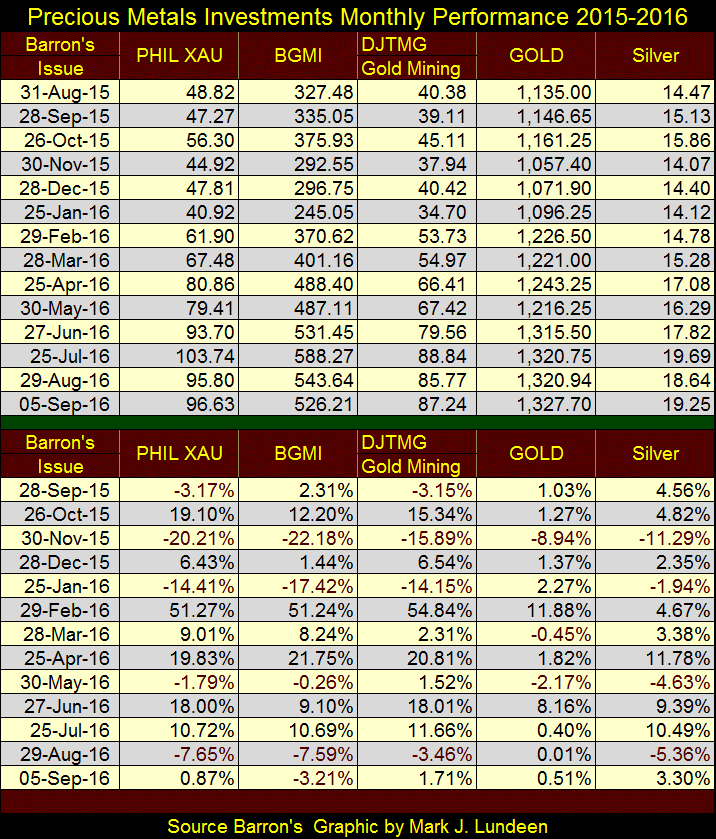Market Commentary For Early November 2017
The week ended with the Dow Jones Index closing down on Thursday and Friday. Still the week closed with the Dow Jones only 0.60% below its last all-time high made on Wednesday, far from its BEV -5% line seen in the BEV chart below. Seventeen months have passed since June 2016, when the Dow Jones last found itself correcting more than 5% from an all-time high. To my way of thinking, there is something odd about that, something fundamentally wrong about how this market refuses to make normal, periodic corrections.
My concern is when the day comes where the Dow Jones does see a 5% correction, it will continue going down to levels that will shock market watchers. A remarkable dead-cat bounce will follow to once again lure the bulls into Mr Bear’s meat grinder, before it goes down yet again in a really nasty market decline.
But when is all this going to happen? When we once again see extreme market events occurring regularly in the market. Days of extreme market volatility or Dow Jones 2% days have always been a harbinger of coming of bad times for the bulls in the stock market
Volatility, as I measure it with the number of 2% days the Dow Jones sees within a running 200 day count, has been at zero since August 23rd, which for the bulls has been a real blessing. Historically, low volatility has been a bull market phenomenon since forever. It’s the old “don’t short a boring market”, and this is one boring market! The chart below plotting the Dow Jones (Blue Plot) with its 200 count (Red Plot) going back to 1990 makes the point.
How much longer the stock market, as measured by the Dow Jones, can continue advancing is a mystery. But market history strongly suggests that until the Dow Jones’ 200 count begins rising above its current zero line, the stock market will continue going up. One thing is certain; a negative 2% day, a 471, or more point down day in the Dow Jones, will be clearly seen in its BEV chart above, and create a shock wave in the market’s commentary. It’s only a matter of time before it happens, and don’t you be shocked when it does.
Until it does, and if what you’re doing is making you money in the stock market, keep playing the game. Just understand that when the Dow Jones once again begins seeing +/- 2% daily moves, it’s because Mr Bear is changing the rules the bulls are now playing by.
Nothing new or exciting is happening with NYSE’s market breadth or 52Wk Highs and Lows, or anything else with the market. I don’t want to become boring to my readers, so let’s just move on to gold.
Gold’s BEV chart below is encouraging. Closing the week at 32.47% below its last all-time highs of August 2011, places the BEV plot at the bottom of its current down trend, but comfortably above the black trend line I placed on the chart. Just looking at the chart, it seems the current correction in the price of gold is resting on its end point. Hopefully the next thing we see below is gold advancing, and taking out its highs of the summer of 2016, above its -27.5% line.
Gold’s step sum chart below is also encouraging. After the huge collapse in market sentiment (as measured by gold’s step sum / Red Plot) from April 2014 to December 2015, gold is now behaving as if it’s in the early stages of its next big advance.
In other words, the bulls still haven’t completely recovered from the 2011 to 2015 collapse in the price of gold; in November 2017 they remain unsure of themselves. But the bears, having exhausted themselves in this decline no longer have what it takes to drive the price of gold down. Keep in mind the government’s market “regulators” allow the bears (the big banks) to cheat, so anything can happen. That said, I still expect the next big move in gold, silver and their miners will be to the upside.
The Dow Jones and its step sum are looking good in the chart below.
Looking at the Dow Jones’ step sum table below, we see how it made five new all-time highs from November 2nd to November 8th. But those five new all-time highs only pushed the Dow Jones up by 47 points, not much of an advance for a market metric currently above 23,500. And then the last two days of the week were down days, with each down day pushing the Dow Jones down more than any of the previous five advancing days pushed the Dow Jones up.
We may be approaching the point where the Dow Jones finds it easier to go down than up. Maybe the day where the Dow Jones declines by 471 points (a 2% day) isn’t that far away.
On gold’s side of the table above, the bulls and the bears are slugging it out. Its step sum is going nowhere fast. Though the bulls haven’t been able to drive the price of gold into a new advance; since October 8th the bears have been unable to drive the price of gold below $1260 either.
Once long ago, in a land far, far away, the Dow Jones Industrials & Railroads (now called the Transports) Averages were the high-tech wonders of the financial world. Before Charles Dow invented his stock averages in the 1880s, no one had ever considered watching the stock market as a whole, a thing unto itself. After he began publishing his stock averages, the stock market has never been the same.
As today, the Dow Jones in the 1880s was constructed using computers. However computers in the 1880s up to, the 1960s (I’m guessing), where people who could calculate the various averages The Wall Street Journal, and Barron’s published, rapidly and accurately using paper and pencils. Besides the Dow Jones Industrials, Transports and Utilities, there was also the DJ 40Bond and Barron’s 50Stock Averages, and a hand full of others averages too.
After the advent of digital computing, Standard & Poors began publishing its S&P500, an index (not an average) based on the market capitalization of the 500 largest companies traded on Wall Street. The Dow Jones Industrials, being an average of the share prices of only 30 large blue-chip companies, a relic of the 19th century, never looked the same afterward.
So, why is the Dow Jones Industrials Average still popular? Because it’s part of not just market history, but of history itself in a way no modern index could ever be. How many points did the S&P 500 climb in the Roaring 1920s, and then crash in the depressing 1930s? Standard and Poors has back dated their data so we could find this out, in an after-the-fact manner. But anyone using contemporary sources to study the 19th, 20th and now the 21st centuries will discover how over the decades, the stock market is best measured by the Dow Jones Averages.
And what is lost when we view market history via the Dow Jones’ Industrial Average in lieu of the S&P 500 Index? Actually, not much. I’ve indexed the Dow Jones with the S&P 500 in the chart below (28 Dec 1978 = 1.00), and for the past 39 years the differences between the two have been minimal.
Considering the radically different composition of these two famous market metrics, this is actually amazing. The Dow Jones being an average price of 30 blue-chip stocks, with a divisor to correct for stock splits, and the S&P500 an index of market capitalization of the 500 largest companies trading on Wall Street.
And exactly what are we looking at in the chart above? Whether the stock market, as a whole, is advancing or declining. Or from my point of view – being inflated by the Federal Reserve in a bull market or being deflated by Mr Bear in a bear market. Understand that during bull markets there are stocks and stock groups that out, or underperform the Dow Jones and S&P or may actually go down in value. Just as during bear markets there are stocks and stock groups that see much deeper declines than the Dow Jones or S&P or may actually advance.
In the tables below I’m showing the frequency distribution for the DJTMG’s percentage declines from their last all-time highs (BEV Values) for the 09 March 2009 sub-prime bear market and the data as of last week’s Barron’s issue.
During the previous bear market, Dow Jones with its -53.78% decline would have been placed in the -50% column for March 9th 2009. I highlighted the -50% column in light brown to show where the Dow Jones would have gone on March 9th 2009.
In that issue of Barron’s, there were no DJTMG groups closer than -34.99% from their last all-time high. From -35% to -45% there were 17 groups who declined less than the Dow Jones in its -50% column, and 52 groups (-55% to -90%) which had declined more than the Dow Jones during the bear market. There were 2 more groups in the -95% column, which is not shown.
The point of all this is that while people think of bull and bear markets in terms of the Dow Jones or S&P500, keep in mind there are individual stocks and market groups that do better, or worse than the major indexes everyone follows daily.
I thought it would be nice to see how the major indexes performed along with the DJTMG data above in the tables below. With all the “liquidity injected” into the stock market by Doctor Bernanke, we shouldn’t be surprised seeing how these big market indexes have recovered from their lows of 09 March 2009.
It’s good taking a step back to consider what has happened over a longer term than just a few weeks, months or even years. So, I constructed the following chart plotting the indexed values of the Dow Jones, a T-Bond I’m following, the growth in CinC as well as the price of gold and silver below.
It’s interesting how gold and silver (Brown & Black Plots), both currently near their bottoms of a particularly nasty correction, have still outperformed the stock and bond markets (Blue & Red Plots), markets currently near their bull market tops during these past eighteen years.
Considering the state of the world today, overloaded with massive levels of debt that will never be paid back, it’s reasonable assuming gold and silver will eventually take out their 2011 highs as the stock and bond market deflate back to, and then below their lows of January 2000.
Taking this study a step further, let’s look at the performance of the Dow Jones Total Market Groups (DJTMG) along with some major market indexes and government statistics during this same period in the table below. Tab color key is given at the table’s bottom.
Note: The values above are indexed values (Jan 2000 / Nov 2017), while those below are percentage gains or losses (Jan 2000 / Nov 2017)-1. In other words seeing the Dow Jones above at 2.05 and below (#60) at 104.74% are the same, just processed differently.
It’s remarkable how well gold and silver (#18 & 34) have held up since January 2000. Much is now being made of the rebound in high-tech, but the best performing high-tech group is digital hardware (#53). All the hot groups of the 1990’s High-Tech and cell phone bubble are now at the bottom of the list, with Semiconductors at #72 and Software at #81.
There’s a lesson to be learnt here; after a bubble deflates it can take decades before a market group recovers, if it ever does to its former high. All the while other groups are benefitting from the interminable flow of inflation from the Federal Reserve. Look at who now find themselves near the top of this table; Healthcare, Tobacco and Railroads, market groups “market experts” heaped scorn on in January 2000. The exact same thing happened to gold and silver from 1980 to 2001.
Of course, the high-tech now in fashion are the social-media companies, which were not big players in January 2000, a group that my data set of the DJTMG does not follow.
A big disappointment has been the poor performance of the gold miners (#73, 80 & 85), but this can change very quickly. It was just in the summer of 2016 when the gold miners were the best performing groups in this exact list, although the calculations were based on the performance from December 2015 to June 2016.
Here’s a table I used in early September 2016 listing the monthly changes in dollars (top) and in percentages (below) for the gold miners and the metals. As seen in November 2015 & February 2016 below, the performance for the miners is heavily leveraged to the metals.
One thing is for sure, it always nice thinking about making money in the markets. Hopefully following my articles will help you and most importantly, me to do exactly this. After all, these articles are only my personal market research I make available to the public. But I’d be failing my readers if I didn’t occasionally point out that we live in an evil world, a world where the strong prey upon the weak simply because they can.
I saw the following link on the Drudge Report on inserting chips into the brains of human beings promising super human results.
SUPERHUMANS: Chips inserted in brains will give us MIND-BLOWING abilities within years
SUPER HUMANS could exist in just 15 years thanks to a computer chip inserted into the brain to unlock the mankind’s full potential.
By SEAN MARTIN
PUBLISHED: 12:19, Thu, Nov 9, 2017 | UPDATED: 11:24, Fri, Nov 10, 2017
http://www.express.co.uk/news/science/877457/brain-function-dementia-super-power-human-kernel
This is nothing to cheer about. We’re looking at how the global elite plan to manage the human resource at their disposal; interphase our brains to their computers, and nothing less than that. Mr. Sean Martin’s inability to understand the dire implications to this development in “digital technology” only proves that he, like most reporters, are at best dim lights.
How one responds to such stories, and the Drudge Report has in the past linked to many stories similar to this one, really depends on one’s world view. If one’s reality is defined by science, then this photo of the Earth from the Moon illustrates the dismal potential our world has to offer life on Earth. This is it, there is no more, and there are billions of useless mouths (people like you and me), consuming Earth’s limited resources. This is no way to manage a planet’s finite resources!
Such a world view commands the Best and Brightest to manage the human resource prudently. If our Best and Brightest demand we have their chips inserted into our brains to control our behavior, then they do their best to do exactly that. The promise we’ll become “supermen” after we accept their chip in our brain is a nice touch, but I’d rather die before I’d let these monsters do that to me or mine.
No doubt about it, science’s view of the Earth is pretty bleak to “useless mouths” such as us, should the elite have their way. But science’s esoteric world view mentioned above is flawed, though they would never admit that in public.
Take the big bang, the origin of the universe. According to science, one moment there was no matter, no energy, no space, and no time. Then in violation of every conservation law known to physics, everything came into existence in a flash from absolutely nothing. Oh, academics have their theories that get around this embarrassing situation, but the facts as we now know them point to the creation of everything came from nothing.
So, scientists in the main refuse to admit it, but the big bang event, as they define it, was a supernatural event. And when discussing the supernatural, a God that transcends the laws of nature comes into the picture as a necessary.
Evolution was a scientific theory born when steam powered locomotive engines were high tech. If we could see a college level science text book from 1860, about the time Charles Darwin published his Origin of the Species, how much of it would have been validated in the following 150 years? The basic laws of physics discovered by Newton and others up to that point would hold up nicely, but little else would.
The cracks in the theory of evolution’s ability to explain the origins of life on Earth continue to grow as science learns more about life. Here’s a link that includes a video produced by Harvard University’s chemistry department on the nano-technology operating inside every living cell in our world. It’s amazing, and inspired the panel’s moderator to use the word “miraculous” to best describe what is seen.
https://www.youtube.com/watch?v=YdjERhTczAs
To continue believing life originated in pools of slime exposed to electro-magnetic radiation early in Earth’s history is increasingly becoming difficult, if not impossible. So “science” is now patched up the theory of evolution with the theory of panspermia, a theory that still fails to explain the origins of self-replicating molecules, aka DNA. That “science” still refuses to even consider the possibility of a God creating life is actually unscientific in my opinion.
https://helix.northwestern.edu/article/origin-life-panspermia-theory
As late as the 1920s science believed that what we now know as the Milky Way, our galaxy, defined their known universe, a huge misunderstanding, as you see in the link below.
http://www.atlasoftheuniverse.com/galaxy.html
My point with all this is that what most lay people believe science knows, just isn’t so. Science has only scratched the surface of all there is to know of the world we live in.
Well, I’m one of those Bible believing Christians that science laughs at. I’m not ashamed of Jesus or the gospels. But unlike a science text book from 1860s, the older the Bible gets the better it looks. Thousands of years ago the Bible told us that in the end times the Earth would be politically and economically united under a single system ruled by a tyrant it calls the Beast, the Anti-Christ whose authority comes from the devil. For people living in this world, there would be no escape, as the Beast’s economy would be able to prohibit the participation of anyone it chooses from buying and selling in this tyrannical system.
This sounded farfetched, and for centuries people mocked the very idea that such a thing was possible, for the good reason it wasn’t possible. Black markets, trading outside a government regulated economy have always popped up anytime something like this was attempted.
But now in the 21st century, should governments succeed in eliminating cash, and cash transaction in favor of plastic for payments of goods and services, all documented via the banking system, it could easily happen. Especially if everyone you have to deal with economically has a chip inserted into their brain, instructing them not to deal with antisocial elements like you who refused to take the chip.
So, let’s pray that in the years to come we all find increasing prosperity coming our way. But I’m just warning my readers that there is a cabal of evil, selfish people who now find themselves in key locations in our economy and society that will have a problem with that. And the more I study the world as it now is, the more confident I feel that many books in the Bible’s Old and New Testaments that have warned us about in the coming times thousands of years ago will be proven correct, because God saw the end from the beginning.
Publishing note: I’m taking a few weeks off as it’s so hard finding something new and interesting to write about. I expect to send out my next article on December 2nd. After that I may take the rest of December off if nothing interesting happens in the markets.
So for my American readers, have a happy Thanksgiving come November 23rd. And remember who it is you’re thanking all that turkey and fixings for. Hint: it isn’t anyone currently employed in Washington DC.
Mark J. Lundeen








